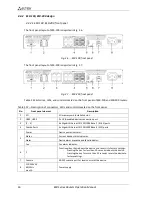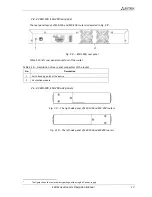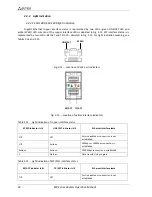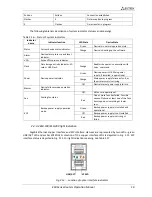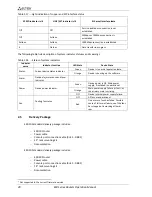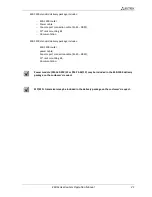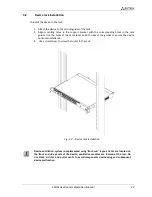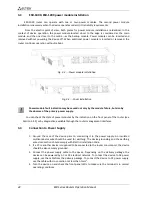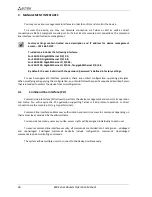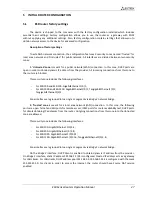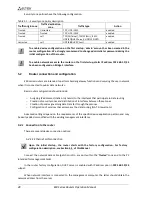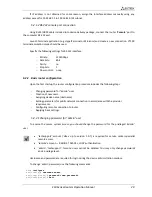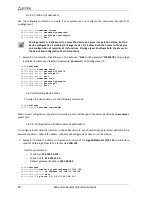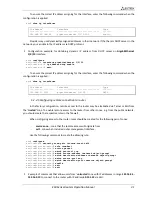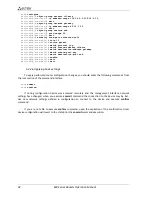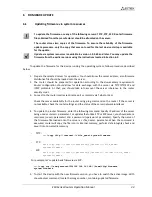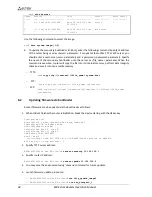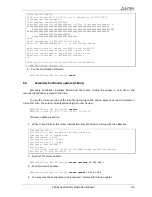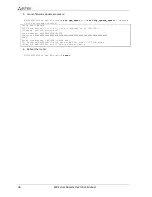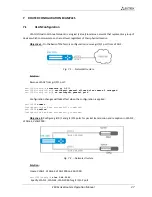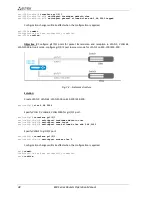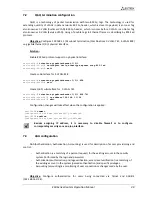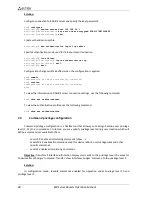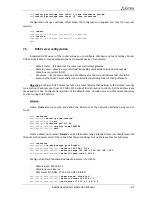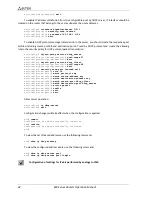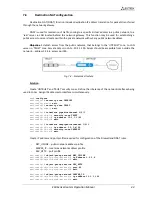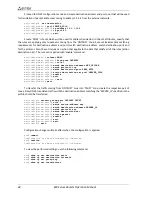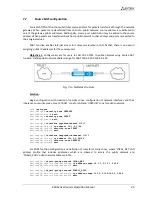
30
ESR Series Routers Operation Manual
5.2.2.2
Creation of new users
Use the following commands to create a new system user or configure the username, password, or
privilege level:
esr(config)#
username <
name>
esr(config-user)#
password <
password>
esr(config-user)#
privilege <
privilege>
esr(config-user)#
exit
Privilege levels 1–9 allow you to access the device and view its operation status, but the
device configuration is disabled. Privilege levels 10–14 allow both the access to the device
and configuration of majority of its functions
.
Privilege level 15 allows both the access to
the device and configuration of all its functions.
Example of commands, that allow you to create user
'fedor'
with password
'12345678'
and privilege
level
15
and create user
'ivan'
with password
'password'
and privilege level '
1
:'
esr#
configure
esr(config)#
username fedor
esr(config-user)#
password 12345678
esr(config-user)#
privilege 15
esr(config-user)#
exit
esr(config)#
username ivan
esr(config-user)#
password password
esr(config-user)#
privilege 1
esr(config-user)#
exit
5.2.2.3
Assigning device name
To assign the device name, use the following commands:
esr#
configure
esr(config)#
hostname <new-name>
When a new configuration is applied, command prompt will change to the value specified by
<new-name>
parameter.
5.2.2.4
Configuration of public network parameters
To configure router network interface in the public network, you should assign parameters defined by the
network provider
—
default IP address, subnet mask and gateway address
—
to the device.
Example of static IP address configuration commands for
GigabitEthernet 1/0/2.150
sub-interface
used for obtaining access to the router via
VLAN 150
.
Interface parameters:
IP address:
192.168.16.144
;
Subnet mask:
255.255.255.0
;
Default gateway IP address:
192.168.16.1
.
esr#
configure
esr(config)#
interface gigabitethernet 1/0/2.150
esr(config-subif)#
ip address 192.168.16.144/24
esr(config-subif)#
exit
esr(config)#
ip route 0.0.0.0/0 192.168.16.1

